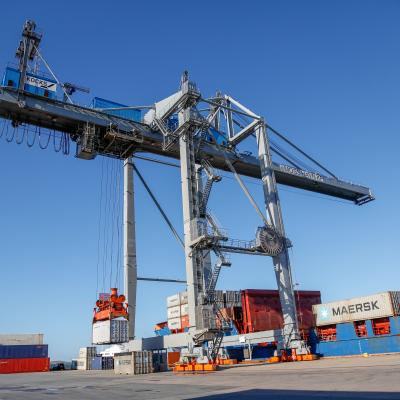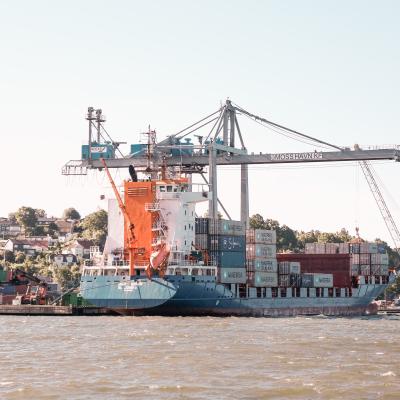A group of students recently partnered with the Port of Moss to explore energy production and storage solutions for electric reach stackers. Focusing on electrification, their research complements the ongoing efforts of the Port of Moss within the REDII Ports project. The Port of Moss functions as a laboratory for testing battery storage as a supplement to the energy supply from the power grid.

Zero-Emissions Ambitions
The Port of Moss has set an ambitious goal: to become a zero-emissions port by 2030. To achieve this vision, the port has been actively pursuing sustainable and innovative energy strategies. The collaboration with Fagskolen Oslo represents a significant stride toward this objective, with a specific focus on ensuring sufficient charging infrastructure for the electric container trucks.
Charging Solutions explored
The student team delved into various methods and products to identify the most suitable charging solution. Their comprehensive report outlines four chargers for the container trucks, explaining the charging effect, the operational cycle of the trucks and their location. Additionally, the team explored the feasibility of using wind power and integrating a solar cell system alongside a battery container—a promising alternative for energy production and storage. One of REDII Ports project partners, NPorts, also focuses on innovative port technologies, especially the generation solutions of renewable energy at local ports. The various possible solutions include energy from wind/tide/solar/wave. Read more about their pilot: https://www.interregnorthsea.eu/redii-ports/pilots/pilot-8-tidesolarwavewind-green-transition-for-in-ports
Solar Energy Solutions: Monocrystalline Solar Panels is the Optimal
Among the findings, monocrystalline solar panels emerged as the ideal choice for the Port of Moss. Renowned for their high efficiency and minimal sunlight reflection, these panels will possibly be mounted on the roof and facades of the warehouse building on the south-east side of the port.
Battery Solutions: Lithium Iron Phosphate Takes the Lead
When it comes to energy storage, the students conclude that lithium iron phosphate batteries is the best option for the Port of Moss. These robust batteries have longer lifespans and more charge cycles compared to other battery types. Notably, Eaton supplies a battery container of 1.5 MWh, which is planned to be used to compensate for power peaks. The port manager at the Port of Moss, Øystein Høsteland Sundby, explains that the project will test the battery capacity to cover consumption peaks and top up electricity when consumption is low. The results of this project will show whether an investment in battery solutions will be smart and profitable.
This collaboration between academia and industry exemplifies the Port of Moss’s commitment to sustainable practices and paves the way for the further research within the frame of REDII Ports project.


